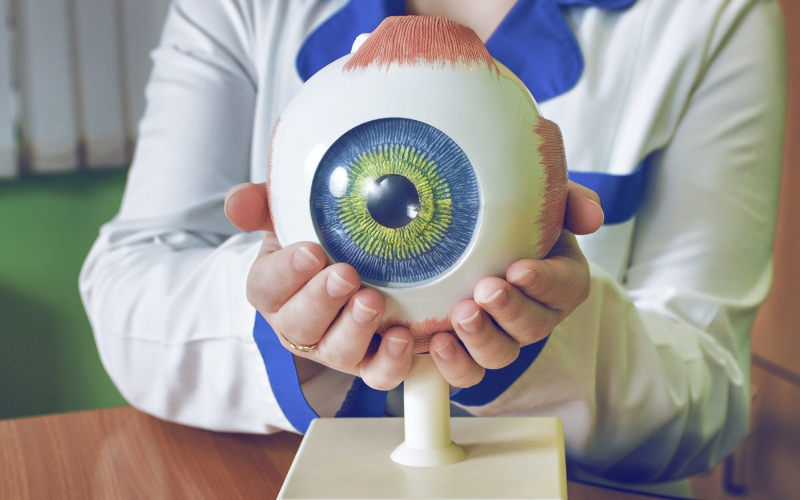A recent survey found that cataracts are one of the leading causes of blindness in India. Had the cataract been treated on time, 93% of blindness cases and 96.2% of severe visual impairment could have been avoided. Cataract is a very common ophthalmic disorder, with Indians getting them at least ten years earlier than their counterparts in Western countries. This blog covers everything you may want to know about the disorder, including types of cataract surgery, cost, side effects, recovery rate, and success rate.
What Is Cataract?
A cataract refers to a condition where the eyes’ natural lenses become cloudy when the protein in the lenses break down. As a result, things look blurry, foggy, and less colorful. Most cataracts are age-related but could also result from an eye injury, glaucoma, diabetes, and even a bad lifestyle. Symptoms of cataracts can range from blurry and double vision to difficulty seeing things at night. Sometimes, patients report seeing bright colors as faded or yellow.
Types of Cataract Surgery
Not all cataracts need surgery in the early stages, cataracts can be corrected with glasses. Surgery is necessary when vision loss affects daily activities like reading or driving. The three common types of cataract surgery include:
Phacoemulsification
Phaco is a surgical procedure where the cataract is broken or emulsified using an ultrasound probe. The surgeon inserts a microscopic probe through a tiny incision into the eye, emitting ultrasound waves that soften and break up the lenses, which are later removed through suction. Phacoemulsification is also called small incision cataract surgery.
Extracapsulary Surgery
This surgery is less common and involves removing the lens as one piece rather than breaking it up. The procedure is performed when phaco cannot be performed because the cataract has become hard and mature. The procedure involves making a longer incision on the side of the cornea to remove the core of the cornea. The remaining lens is removed through suction. The doctor administers antibiotics to prevent infection before the surgery. This is an outpatient procedure done under local anesthesia and intravenous sedation. While the incision is small and does not often require stitching, in some cases, the patient may need stitches if the incision is large.
Laser-assisted Cataract Surgery
This process involves using an ultrasound device to make an incision in the eye to soften the cataract and suction them out. Laser surgery helps make an incision that’s more precise than a surgeon’s. It is performed to correct astigmatism and reshape an imperfectly curved cornea.

Cataract Surgery Cost
Cataract surgery cost varies depending on several factors, viz., the location of the hospital, the complexity of the case, the type of procedure, the surgeon’s experience, aftercare facilities offered by the hospital, and the technology used for the procedure. The average cost of a cataract surgery could vary from INR 20,000 to INR 1,20,000, although costs could vary from hospital to hospital.
Cataract Surgery Side Effects
Like any other surgical procedure, cataract surgery too involves side effects. However, cataract surgery side effects are minimal and disappear over time as the eyes heal. Some of the common side effects include:
- Blurry eyes
- Dry eyes
- Discomfort in the eyes
- Dysphotopsia or experiencing glare, halos, or streaks of light
- Light sensitivity
- Nausea
- Disorientation
- Red eyes
- Droopy eyelids
Cataract Surgery Recovery Time
The recovery process differs for different people, although it could take around four to eight weeks for patients to heal completely from the surgery. Doctors, however, advise patients to avoid harsh sunlight for a few months to allow for complete recovery. While cataract surgery recovery time is slow, patients may experience improved vision within 24 hours of the procedure.
Cataract Surgery Success Rate
Cataract surgery is a simple procedure with over 98 percent success rate Complications are rare and often occur because patients fail to follow instructions. The doctor may ask you to avoid driving or strenuous activities after surgery for a few days. You will be asked to avoid swimming or using a hot tub to prevent infections. Do not rub your eyes or wear eye makeup. You will also be asked to wear sunglasses to prevent dust, pollen, and other irritants from entering the eyes. The doctor will provide a protective shield for the eyes during sleep. This helps avoid accidentally rubbing them during sleep. Depending on the reason for the cataract, the doctor may suggest avoiding certain foods. For instance, if you have diabetes, you’ll be asked to avoid foods that spike glucose levels in the blood, leading to damaged blood vessels.
Eye Hospital in Nagercoil
While plenty of hospitals offer different types of cataract surgery, we recommend you visit us. We are one of the best eye hospitals in Nagercoil, offering affordable treatment using state-of-the-art technology.
Visit us to learn more about the procedure and consult the best eye specialist in Nagercoil.
